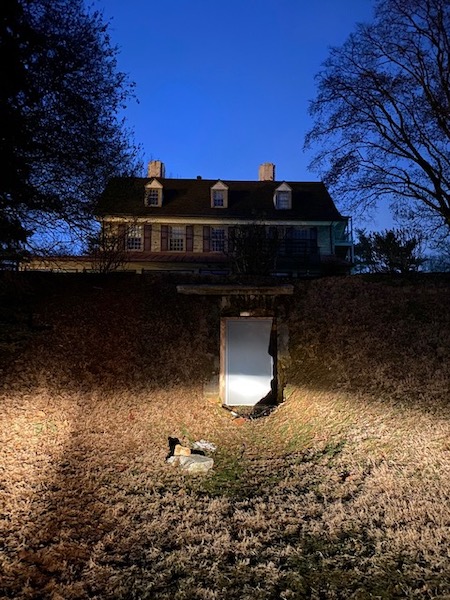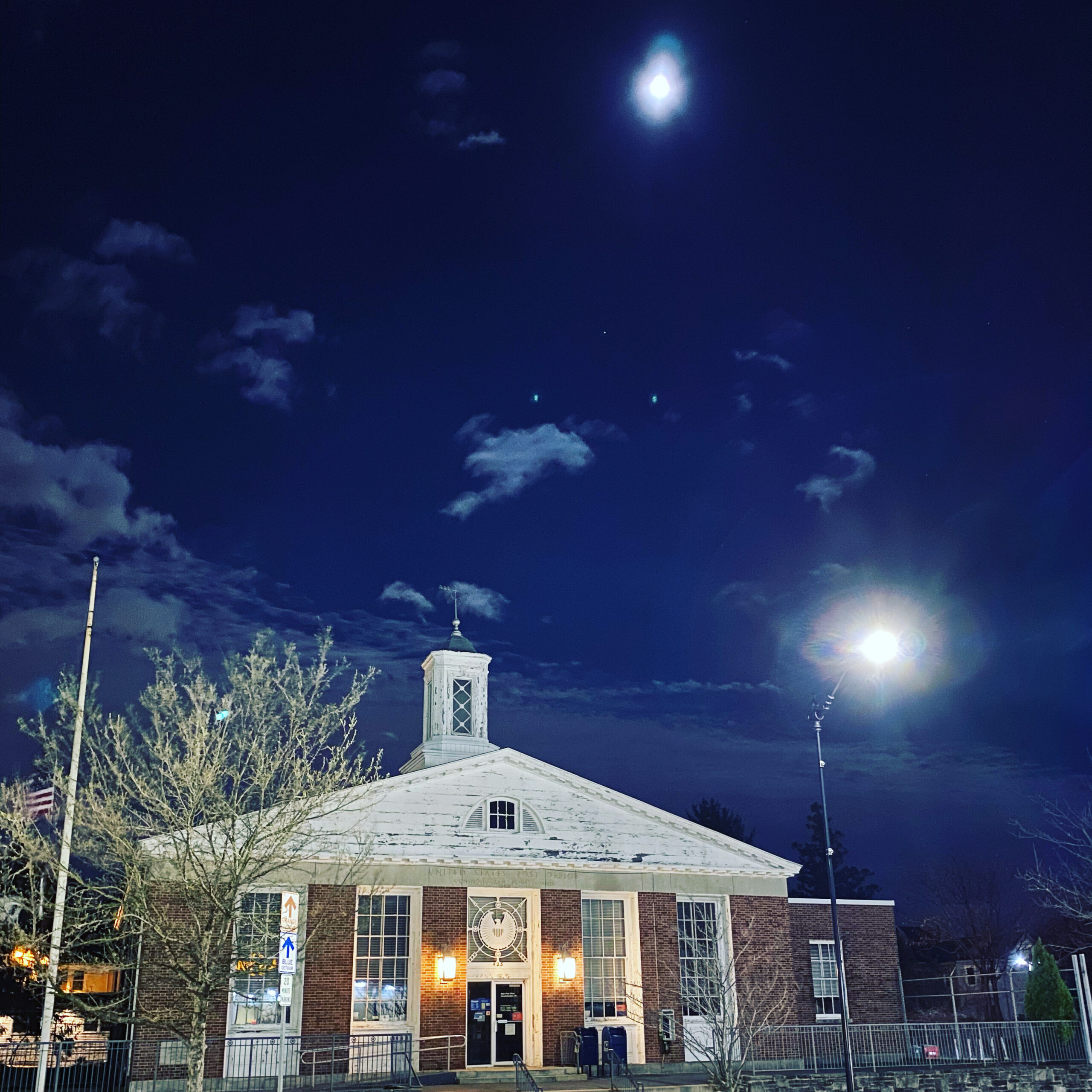
Please Paint the Conshohocken Post Office
April 6, 2021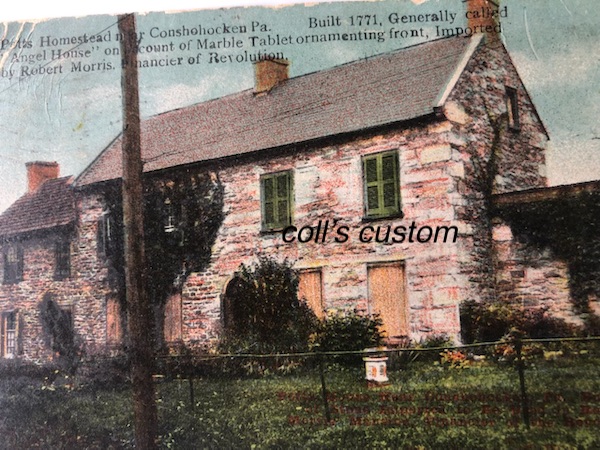
History of a House – The Angel House
April 15, 2021Peter LeGaux, Mount Joy, America’s First Commercial Vineyard and More All Right Here
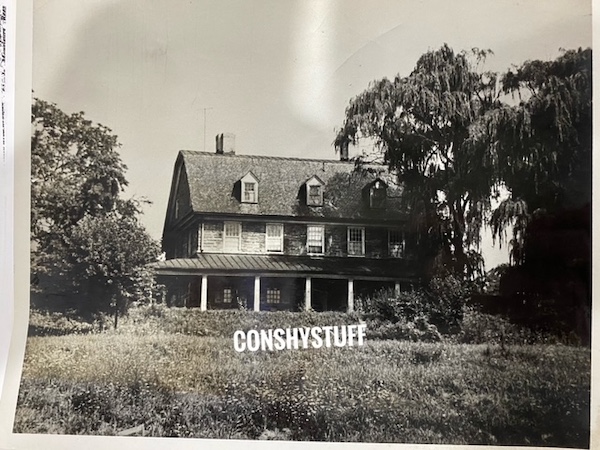
Peter LeGaux, Mount Joy, America’s First Commercial Vineyard and More All Right Here
4/11/2021
by Brian Coll
I’ve always been fascinated by the LeGaux mansion, or Mount Joy located in the Spring Mill section of Whitemarsh Township. So, recently when a gentleman named Ron Cione posted a matchbook cover of the Colonial Inn I was intrigued.

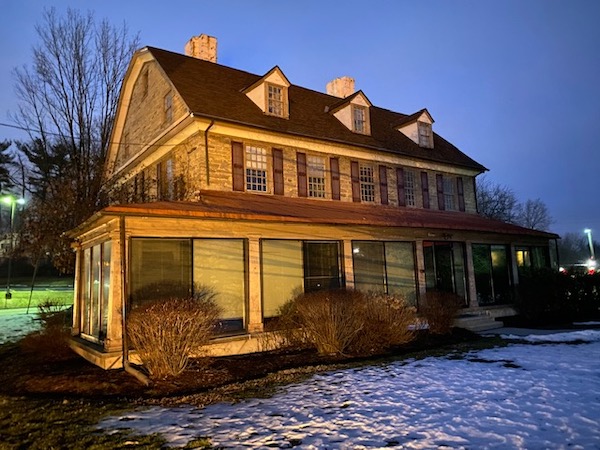
Before I continue, I have to thank my dad Jack Coll for collecting a number of articles and stories from over the years as well as taking me to the LeGaux mansion years ago. It was one of the first times I had heard of and got to see first hand the Underground Railroad. Among the documents we have are a number of articles by an old friend of ours named Harold McCuen. He was a writer and one time owner of the Conshohocken Recorder. He was also a descendant of Peter LeGaux as well as a resident of Mount Joy.
Now before I sound too much like someone posting a recipe where they talk about the trip they took and were inspired by the tuscan salmon recipe they are about to share as soon as they finish talking about the wine that it pairs best with…. I need to talk about wine. A few years ago a handful of people came to visit us at our shop (Coll’s Custom Framing). Leading the group was Hudson Cattell (may he Rest In Peace) and I could be mistaken but Lee Stauffer Miller may have been there as well. They gave credit to Pierre “Peter” LeGaux for having founded the first commercial vineyard in the United States in their book The Wines of the East, Native American Grapes. Peter LeGaux had a vineyard on his property that became the Pennsylvania Vine Company. Among the share holders of that company were Alexander Hamilton (yes that one) and Aaron Burr (the damn fool that shot him). The group that visited our store also got to visit the grounds and building of Peter LeGaux. They spoke of how the property must have looked in the 1700’s when LeGaux owned and resided on the property.
Before I move on from the wine aspect, I would love to see a Conshohocken wine that would use LeGaux’s name in some fashion to pay tribute to the first American commercial vineyard. If a winemaker reads this, we may have some idea of the grapes that grew on the property, not sure how the wine would actually taste…
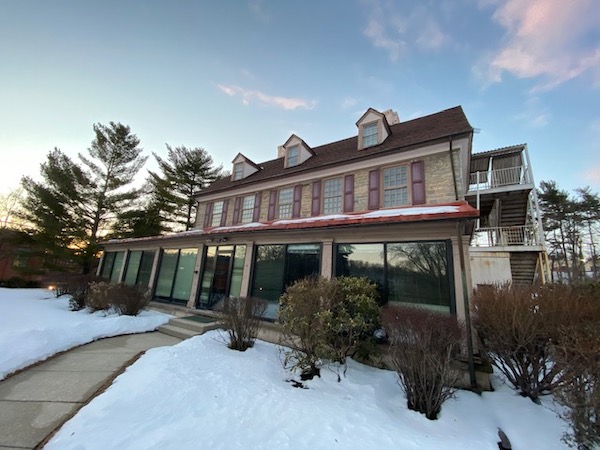
Now… I’ll start with the mansion, which still stands today. In our files we have conflicting dates as to when the mansion was built. We can put a rumor to rest though, whether the mansion was built in 1715 or 1735, Robert Morris (financier of the Revolution) did not build it as he was born in 1734. Fun fact about Robert Morris, he did contribute to the building “The Angel House” once located on Butler Pike.
The linear property ownership if you will, and you may recognize some of these names. Before it was William Penn’s property, it was of course home to the Lenape Indians who settled here long before any of us. William Penn sold 5,000 acres to Major Jasper Farmer. The restaurant Jasper’s Backyard is named in honor of him. This 5,000 acres spread well into present day Whitemarsh and butted against a great plantation of Nicholas Scull’s, who was Penn’s Indian interpreter and surveyor. From the initial 5,000 acres 513 became detached and deeded to Welsh farmer David Williams. It was during his ownership that the old gristmill was built on the property. This brings us to the year 1715 where records show that Reese Williams (oldest son of David) leased 7 and a half acres to Robert Jones and Anthony Morris for water rights to the grist mill. At some point the entire property was turned over to Anthony Morris whose grandfather founded the city of Philadelphia’s first brewery. Anthony turned the property over to John Morris around 1750 and then it became George Mifflin’s who in 1773 sold the property to Samuel Miles. The name “Miles” might be jumping off the page (or screen) to you because of Miles Park along Germantown Pike in Whitemarsh. The park is named after him due to his service to his community, and his country serving as a Colonel before becoming Captain of the First City Troop of Philadelphia in 1786.

Back to the property ownership, it should be noted that the mansion on the property became known as Mount Joy due to Samuel Miles. (we have a report that it was Peter LeGaux who coined the name Mount Joy, but at least one record shows Mount Joy before Peter LeGaux came to the area)
In a short matter of time the property changed hands from Samuel Miles to Abel James who sold it to Major Prevost, from whom it passed to Peter LeGaux in 1786. We’ll get back to Peter LeGaux, but for now we will continue with the property ownership and residence. Peter LeGaux passed away in 1827 and the property including the mansion, the barns and grounds went to his son in law John Righter who held it in the families possession until 1921 when it became a country club. The country club years, you know, they need a little section right here.
The Santa Maria Country Club, or Spring Mill Country Club towards the end of its short history used the property formerly owned by Peter LeGaux. The grounds become a tennis court, a 9 hole golf course, 2 handball courts and, and a baseball field! The buildings on the property become the clubhouse, the large barn had amusements and lockers and a large dance floor on the second floor. The baseball field brought a neat little piece of history to the Conshohocken area. Connie Mack and the Philadelphia A’s would travel to Conshohocken and the Spring Mill area by train, mind you, this was in the 20’s when the Pennsylvania Blue Laws were in effect in the Philadelphia city limits. So the A’s would come to Conshohocken to play some baseball. Thousands of area residents would go to the country club to see baseball being played. This was before TV’s, and radio’s weren’t always available to the regular resident.
By 1929, the country club was ready to fold and it became a high end speakeasy known as The Colonial Inn. You can read about prohibition and some local spots here in this article by Jack Coll for Conshystuff.com
https://conshystuff.com/prohibition-a-little-education-and-conshohockens-involvement/

During this period, we can find no record of the Colonial Inn ever being raided, most likely due to the high profile people who would frequent the Colonial Inn. If it was raided, there would have been plenty of places to hide the booze or contraband throughout the old mansion. Even to this day, there are still traces of the spots where the Underground Railroad would have took place. It is reported that the Colonial Inn had an alarm system throughout to alert people in one room if there was trouble in another.
In the years leading up to the country club and then the Colonial Inn the Righter family owned the property and buildings. In the early 1900’s they sold 22 acres to John Elwood Lee to build the Jelco Tire Plant which later simply became known as Lee Tires. The name change came from when John Elwood Lee of Conshohocken struck a deal with Henry Ford, Mr. Ford thought Jelco sounded a little too much like jelly which was soft, he wanted the tires on his Ford automobiles to be tough.. so the name changed to Lee Tires of Conshohocken.
Spring Mill Fire Company was formed in 1923 and by the fall of 1928, the Spring Mill Fire Company was prepared to buy the former LeGaux mansion and the remaining buildings. The country club was having financial problems and the pioneers of the Spring Mill Fire Company saw their future. The fire company took over the barns, that had recently become locker rooms for the golfers and dance floors upstairs. When the country club was done, they made use of the old barns for the fire apparatus (nothing like today) in fact their first apparatus was a REO Speed Wagon Chasis with two 35 gallon chemical tanks, a 12 foot ladder, and 700 feet of hose plus a 20 foot extension ladder. (Years later music by REO Speedwagon would be playing upstairs in the social hall at wedding and dances.)
If you want to read about the Spring Mill Fire Company Fair, check this recent story by Jack Coll out:
For a number of years the Spring Mill Fire Company leased the old LeGaux mansion out to families to live in the property. In 1952 the Love family moved out and in moved an old friend of our family Harold McCuen. At the time, the rent on the mansion was $100 a month, up from the $50 a month the Love family had been paying. The McCuen’s had an option to buy the old mansion, which would have been great because Harold was a descendant of Peter LeGaux by way of his mother Sarah Righter Seville McCuen. However, the McCuen’s Harold and his wife Frances were in negotiating to buy the Conshohocken Recorder Newspaper. I mentioned at the start of this, that I had to thank Mr Harold McCuen for his research and writings for this article. He and his family are worthy of an article as well and I might have to revisit him. I was lucky enough to get to know him through my dad Jack as Jack was beginning to research and become an unofficial historian of Conshohocken and vicinity. The McCuen’s may have been the family that lived in the mansion the longest. It was also Harold and Frances who spent about $50,000 of their own money to get the property listed in the National Register of Historic Places. This status was achieved in 1971.
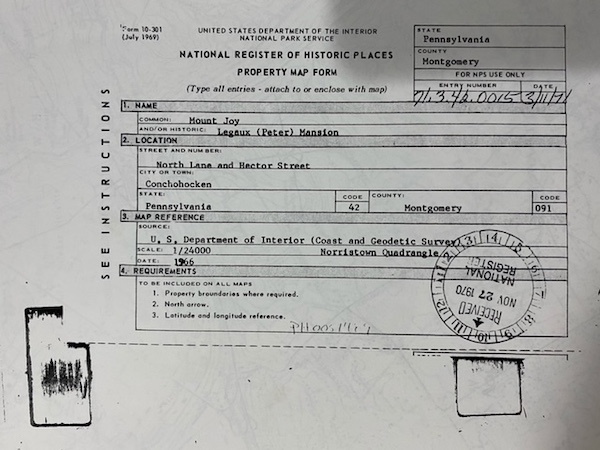
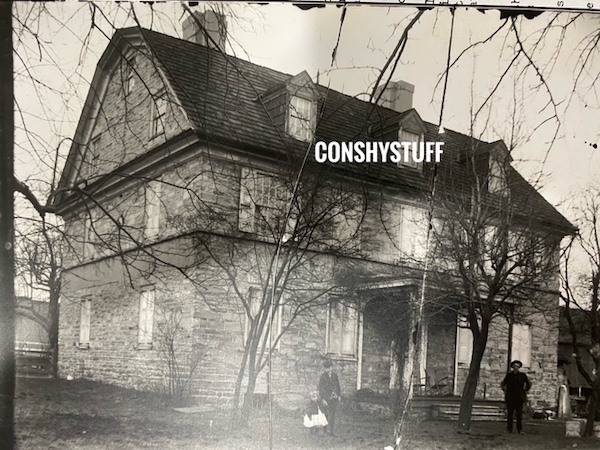
When the McCuen’s moved out around 1985, it took a few years to find the next tenant, the O’Neill Properties Group. My dad Jack spent some time exploring the mansion at this time with Harold McCuen and was able to take some interior photos. To this day the Spring Mill Fire Company owns the LeGaux mansion, or Mount Joy.
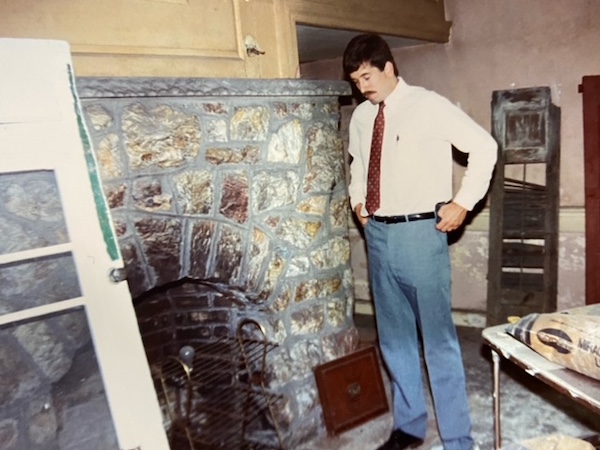
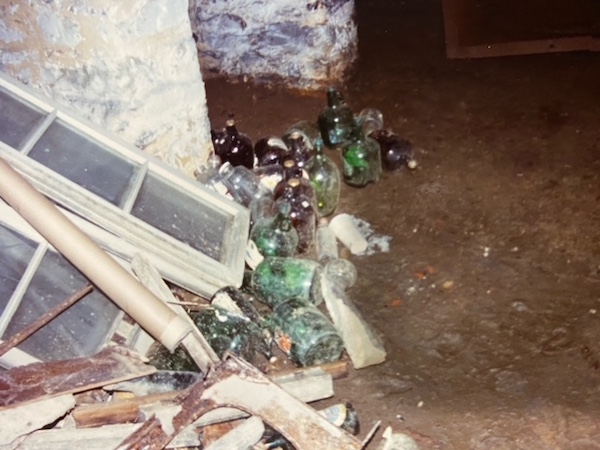
Now, we have traced the ownership and tenants from over the course of the past 300 or so years. Let’s dig into the most famous of the owners. Peter LeGaux.
Peter LeGuax was born in France in 1748 and lived there until 1781, he was married to Barbe Ferbal and they had a daughter Sophie. Peter was a lawyer who was in government service. He was loyal to King Louis XVI and was given an assignment in Guadaloupe, as the impending French Revolution brought on this change. He tried to return to France and was advised it would not be a good plan. Some reports have the Royal family asking Peter LeGaux to find a property in America for them to abdicate to, that plan never was fulfilled. However Peter LeGaux was in possession of some of the Crown Jewels and reportedly some of those jewels made it to the McCuen family when an estate was settled.
Saying that Peter LeGaux was a lawyer, is really short selling his achievements and endeavors. He was a licensed surgeon as well as a scientist, a great weather tracker long before the national weather service. Some of his notes on the weather in our area are archived in the American Philosphical Society and his reports were used in Ben Franklin’s Almanac.
One of the most noteworthy achievements of his may have been as a member of the Masonic Lodge. LeGaux was a member of the King’s Lodge and received certain Masonic dispensations direct from King Louis XVI. Another Mason had visited Peter LeGaux at Mount Joy on a couple of occasions, General George Washington. It was during one of these visits that another Frenchman General Marquis De Lafayette was sworn in as a Mason in the presence of General George Washington. Other notable guests of Peter LeGaux at the mansion include Thomas Jefferson, The Audobons (who didn’t live too far away) were frequent guests and they spoke of nature. Peter LeGaux kept bee hives on the property along with the vineyard so they had much in common. Benjamin Franklin and his wife Deborah, the Morris’s, Judge Tighlman, General Mifflin, Peter Muhlenberg, and Thomas McKean who became the Pennsylvania Governor in 1799 among other notable citizens of the time.
While Peter had some famous friends and investors in his vineyard like Alexander Hamilton and Aaron Burr, the world was very different. On most days, he could be found tending his bees, working in his work shop which looked out over his gardens and bees. He created his own glass bottles for many of the projects in his laboratory. He was very creative and neighbors would often bring him items to fix. He had a love and passion for astronomy. His love for astronomy helped him home on at least one occasion when he became disoriented on his way home from Norristown. At the time, there was a lot of woods between the two areas, he looked up and could start to figure out how familiar constellations looked from his point of view and it helped him find his way home.
We tend to think of the Schuylkill River as a natural boundary between the Conshohocken and Whitemarsh sides of the river to the other side of the river in Lower Merion at this point, however Peter LeGaux owned land on both sides of the river. This allowed him to operate a public ferry from “our” side of the river to the other side. This business venture started in 1787. This was an extremely important means of transportation at the time. There were no bridges in the area at the time that spanned the river. For over 20 years this ferry was the main transportation for the farmers to reach the mill on the property as well as make their connections with one another. The bridge at flat rock didn’t come along until 1810, the bridge at Norristown in 1828 and Conshohocken’s came later.
The famed Bubbling Springs were located on the property in the time of Peter LeGaux. There was a gristmill on the property before he became the owner. These two things made the property very special. The mill was essential for colonial life. The springs kept the mill going. One of the unique things about the bubbling springs was the fact that summers drought times and winters frost periods never affected the springs. These unique traits of the springs kept the mill going through the year while others in the area had dry times or times of the year where the water source was frozen. The Spring Mill area was very fortunate. The natural bubbling springs brought Benjamin Franklin out to visit a few times. He even proposed that the bubbling springs on Peter LeGaux’s property be used as the water source for the city of Philadelphia. He proposed a 15 mile pipe line to the city. The water from the springs later went on to provide the water used at the Hamilton Paper Mill in the Miqoun section. We’ve spoke of the Bubbling Springs and there role in the early 20th century as a hangout and swimming hole, but for years and years, the springs were an integral part of everyday life for the early settlers of our community.

His diaries were split up by his family upon his death and from reports, he kept a record of everything, everything around his property. The weather, disputes between neighbors, weddings and births of children. I mentioned above his weather reports, they spoke of temperate weather, sun spots, early and unseasonable frosts. He kept his notes for over 40 years on a daily basis while living at Mount Joy. Peter lived on the property from 1786 until his death in 1827.
A few notes… Peter was born Pierre and Anglicized his name upon coming to America. His last name has been noted as both LeGaux and Legaux, for our purposes of this article, I went with LeGaux throughout, but would not argue the point of the spelling Legaux. One of the most fascinating parts of the history of the LeGaux mansion came in the late 1700’s into the 1800’s when the property was part of the Underground Railroad. The mansion had hiding places and could help usher the former slaves onto the next destination. To this day, there are still some secrets that the building may hold.
Mount Joy may have seen some of the most interesting history our community has to offer between multiple founding fathers of our country, baseball players and the legendary Connie Mack on the property. A speakeasy during prohibition, a stop on the Underground Railroad, the first commercial vineyard in America. This property predates our nation. Long gone are the grist mill, the bubbling springs, the ferry, the bees, the vineyard. So much happened on this property, much of it was witnessed and made possible by Peter LeGaux.
Thank you for taking the time to step back in history.
Jack has an interesting story on the “Angel House” property in the works, so please check back soon.

